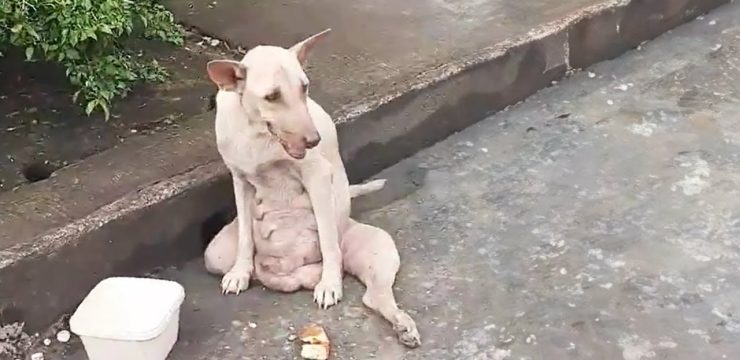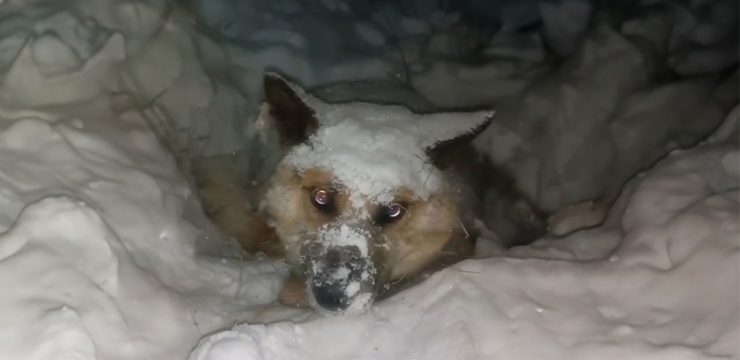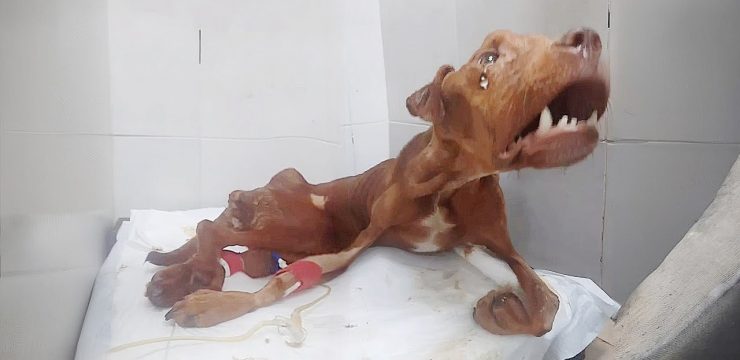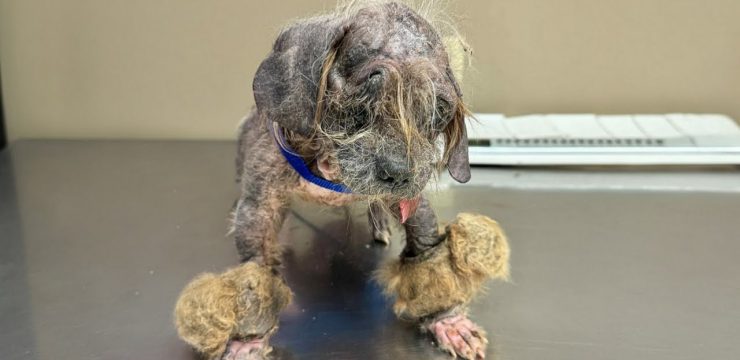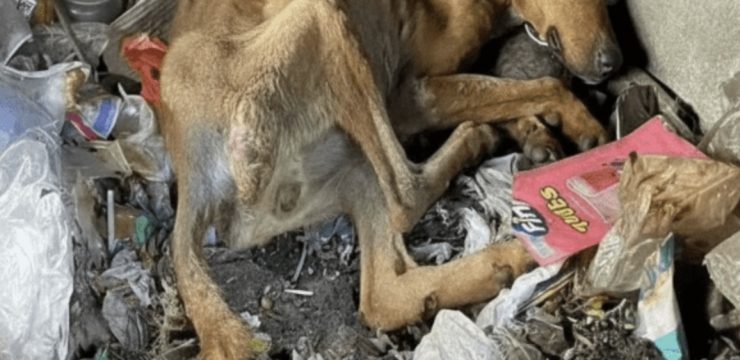In the opening moments of the video, a haunting image fills the screen: Lulu, a frail greyhound, stands chained in a desolate and crumbling yard. Her body is painfully thin, every bone visible beneath her dull, patchy fur. For ten long years, neighbors say, Lulu had been tied to the same spot—through heat, cold, rain, and storms—left to survive on scraps and silence. Time had reduced her to a shadow of life, yet somewhere in her fading eyes, a quiet spark of hope still lingered.
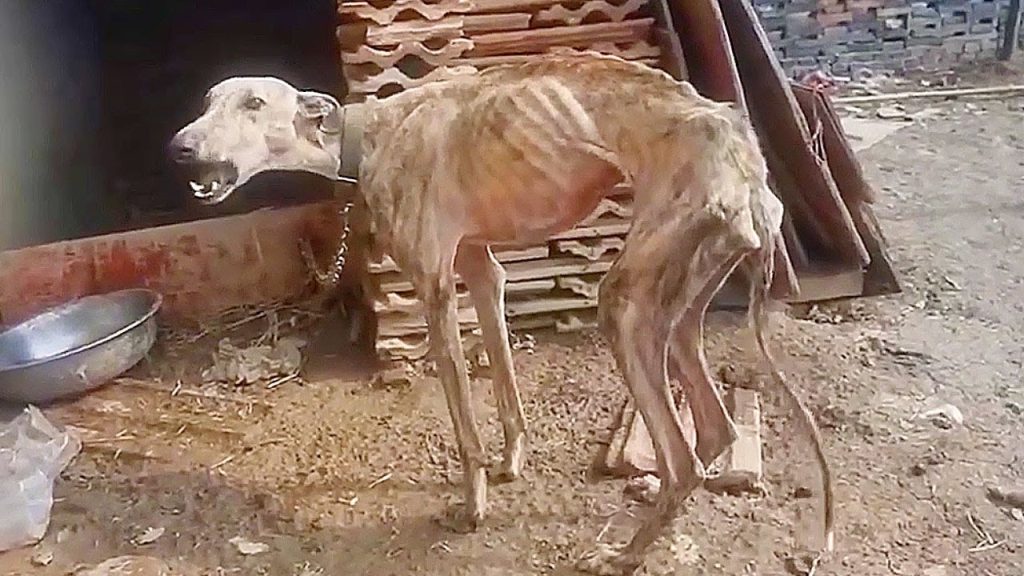
When a group of volunteers learned about her situation, they wasted no time. They arrived at the scene, hearts heavy but determined to help. As they gently unfastened the chain that had defined her world for a decade, Lulu didn’t resist. She was too weak to move, too tired to understand what freedom even meant. Her legs trembled as the volunteers lifted her onto a soft blanket and carried her to their van. For the first time in years, she was heading somewhere safe—somewhere she could finally be cared for.
At the animal hospital, the doctors quickly realized just how severe her condition was. Lulu was severely dehydrated, her blood count dangerously low. Her skin was covered in scars, and signs of long-term malnutrition had caused her organs to weaken. Tests confirmed what the volunteers feared: her liver and kidneys were beginning to fail. The doctors moved fast, placing her on an IV drip, hoping to stabilize her before it was too late.
But even with fluids, Lulu’s body was shutting down. The veterinarian explained that she needed an urgent blood transfusion—without it, she might not survive the next few hours. Unfortunately, the hospital didn’t have the right supply available. The volunteers exchanged anxious glances. After all Lulu had endured, they couldn’t let her go now. One of them suddenly remembered another dog they had recently rescued: a gentle, healthy Golden Retriever mix. Maybe, just maybe, he could help.
They rushed to get him. The Retriever, whose name hadn’t yet been decided, was nervous as he entered the clinic. He didn’t understand what was happening—his body stiffened, eyes wide with fear, as if he thought he might be in danger. The volunteers knelt beside him, stroking his fur and whispering soft reassurances. “You’re safe,” one volunteer said quietly. “You’re going to help save a friend.”
As the medical team prepared the transfusion, the room filled with a sense of tense anticipation. The Retriever’s blood began to flow through the tubes into Lulu’s fragile body, drop by drop—life returning to where it had almost vanished. Hours passed slowly, and the volunteers stayed close, praying in silence. By the end of the procedure, Lulu’s breathing had steadied. Her heartbeat, once faint and irregular, grew stronger. Against all odds, she had made it through the night.
The following morning brought something close to a miracle. When the volunteers entered Lulu’s room, she was already standing—unsteady, but determined. Her tired eyes now shimmered with recognition. It was as if she knew that these people, and that brave Retriever, had given her another chance at life. The doctors smiled as they checked her vitals; her progress was far beyond what they had expected. Lulu was discharged that very day, wearing a tiny pink recovery shirt to keep her warm.
As the volunteers opened the car door, Lulu surprised everyone. Instead of hesitating or cowering, she walked right up to them and began wagging her tail. It was a slow, fragile movement, but filled with unmistakable joy. She pressed her head against their hands, nuzzling softly as if to say thank you. The moment was simple yet deeply moving—a living reminder of how compassion can heal even the deepest wounds.
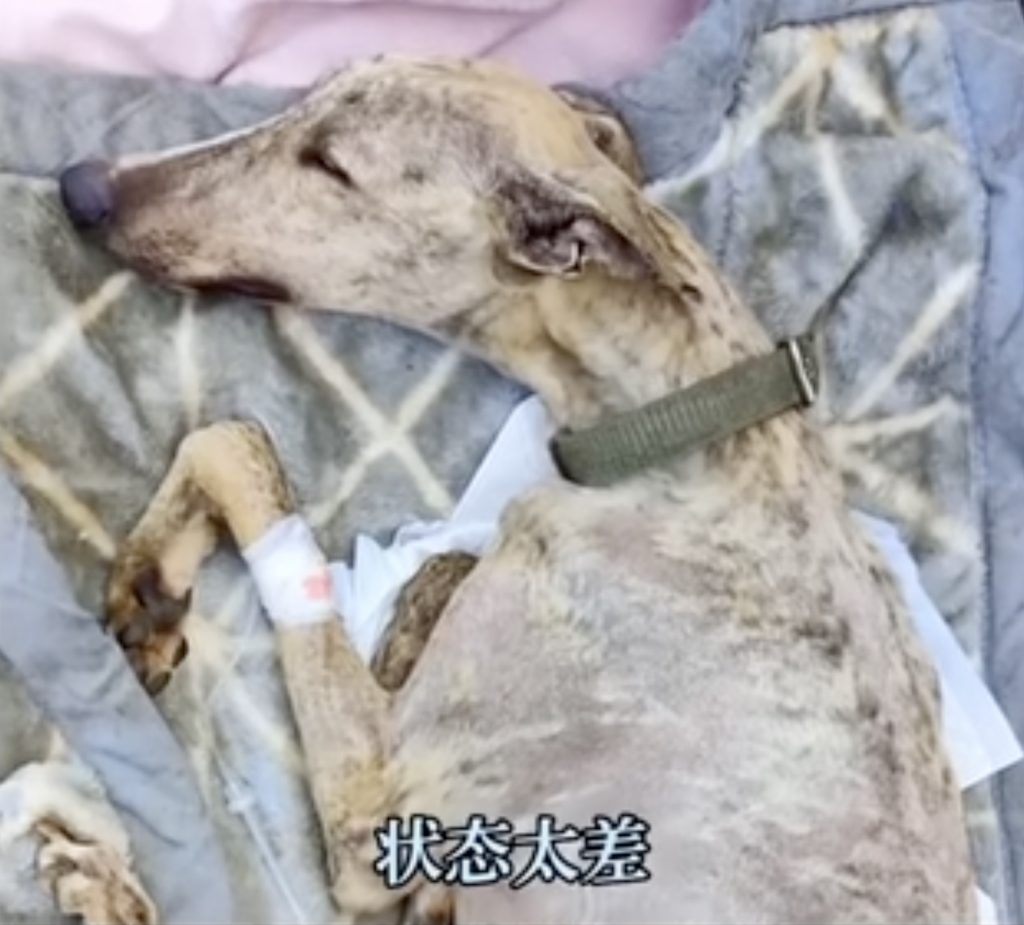
A few days later, the rescuers filmed Lulu’s first walk outside the clinic. Her steps were still a little shaky, but she was walking—truly walking—for the first time in years. And beside her was the very dog who had saved her life. The Golden Retriever had become her loyal companion, gently keeping pace with her every step. In one of the most touching moments of the video, he held Lulu’s leash in his mouth, guiding her as if she were his younger sister. Together, they walked under the warm sunlight, side by side, two souls bound by an invisible thread of gratitude and love.
What makes this story so powerful isn’t just Lulu’s survival—it’s the quiet heroism behind it. The volunteers who refused to give up, the doctors who worked tirelessly through the night, and the Retriever who unknowingly became a lifesaver all played a part in rewriting Lulu’s destiny. They proved that kindness still exists in a world that can often feel indifferent.
Today, Lulu is not the same fragile creature that once stood trembling in that forgotten yard. Her fur is slowly growing back, her eyes are bright, and her steps are strong. She still follows her rescuer friends around, wagging her tail and leaning in for affection. And every time she’s reunited with the Retriever, the bond between them is clear—she greets him with excitement, as if she remembers that her heartbeat is, in some way, tied to his.
For those who watch her story, Lulu becomes more than just a dog who was rescued. She’s a symbol of endurance, of what happens when love meets despair and refuses to surrender. Her transformation reminds us that no creature, no matter how broken or forgotten, is beyond hope.
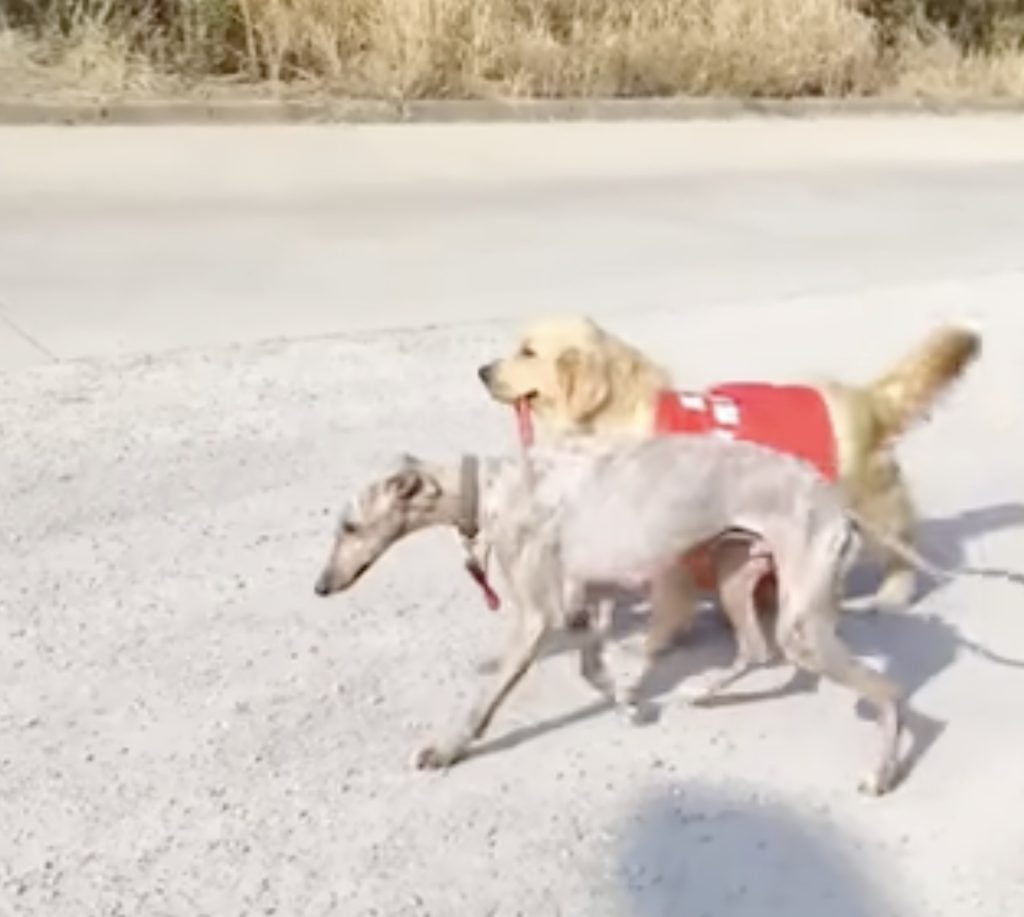
As the video fades out, the camera captures one final image: Lulu and her Golden Retriever friend walking together down a sunlit path. The Retriever still holds the leash gently in his mouth, guiding her with quiet patience. Their shadows stretch across the ground, merging into one. It’s a tender picture of trust, renewal, and grace—the kind of moment that restores faith in the goodness of the human heart.
Lulu’s story isn’t just about survival. It’s about connection—the kind that transcends language, species, and circumstance. It reminds us that healing often comes from the simplest acts of compassion. And as long as there are people willing to care, to fight for life when it seems impossible, there will always be stories like Lulu’s—stories that light the way toward something better.
